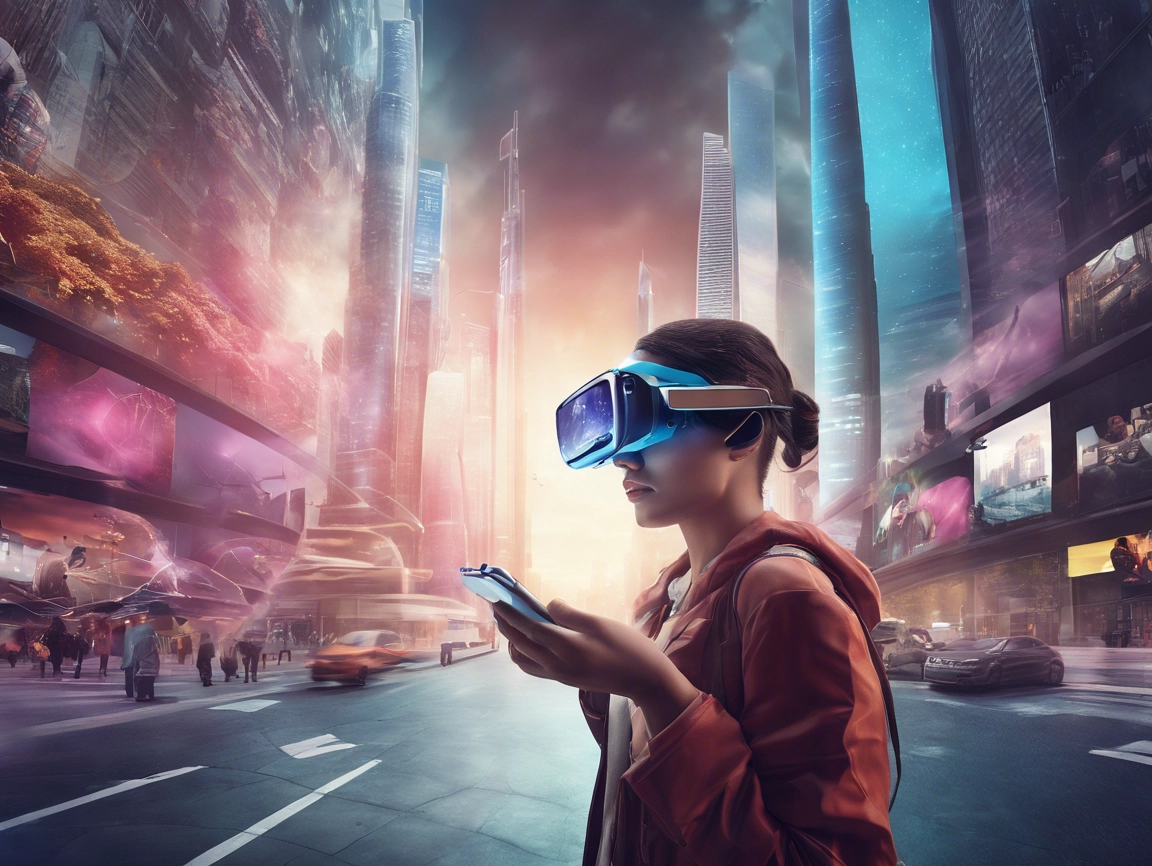The Future of Augmented Reality: Practical Applications in 2025
As we step into 2025, Augmented Reality (AR) is no longer a futuristic concept confined to science fiction. This groundbreaking technology is rapidly shaping the way we interact with the world, influencing industries from healthcare and education to retail and entertainment. With major advancements in hardware, software, and content creation tools, AR is poised to revolutionize practical applications across various sectors.
In this blog post, we will dive deep into the exciting practical uses of AR in 2025, exploring its potential to transform our daily lives, businesses, and industries.
1. AR in Education: Revolutionizing Learning and Training
The educational sector has been one of the most significant beneficiaries of AR. As learning environments become more interactive and immersive, AR offers new ways to engage students and provide real-time information. In 2025, AR is expected to make educational experiences more dynamic and accessible than ever before.
Interactive Learning Environments
Imagine a history lesson where students can interact with ancient civilizations, or a biology class where students can explore the human body in 3D. AR brings textbooks to life, making learning more engaging and memorable. By simply pointing a device at a page, students can view additional resources, videos, and animations related to the topic.
Professional Training with AR
AR is transforming professional training, particularly in fields requiring hands-on experience. For example, in aviation or medical fields, trainees can perform simulated procedures with guidance from AR overlays, reducing the need for physical resources and offering a risk-free environment for practice. In 2025, we can expect a surge in AR-powered training programs across industries.
2. AR in Retail: Changing the Way We Shop
The retail sector is evolving rapidly, and AR is at the forefront of these changes. With the rise of online shopping and changing consumer expectations, retailers are increasingly turning to AR to provide more immersive and interactive shopping experiences.
Virtual Try-Ons and Fitting Rooms
One of the most popular AR applications in retail is virtual try-ons. Brands like Sephora, IKEA, and L’Oreal are already using AR to allow customers to “try on” makeup, clothes, and even furniture through their smartphones. In 2025, we can expect this feature to become even more advanced, enabling more accurate virtual representations and personalized suggestions based on customer preferences.
Product Visualization
AR is also changing how consumers visualize products before buying. For example, furniture retailers are using AR apps to let customers place 3D models of furniture in their homes. This helps customers make better purchasing decisions, reducing the uncertainty often associated with online shopping.
Enhanced In-Store Experiences
AR is not just for online shoppers. Physical stores are also adopting AR to improve the in-store experience. Imagine walking into a store, pointing your phone at a product, and instantly seeing detailed information about it, including its specifications, reviews, and even promotions. This technology will make the shopping experience more efficient and personalized.
3. AR in Healthcare: Enhancing Patient Care and Medical Training
Healthcare is another area where AR is making significant strides. By providing doctors and surgeons with real-time, immersive data, AR is transforming patient care and medical training.
Medical Imaging and Diagnostics
AR is helping doctors visualize internal organs and systems in real-time, offering a more detailed and accurate diagnosis. For example, AR can overlay medical images (such as MRI scans) directly onto a patient’s body during a surgery, helping surgeons navigate complex procedures with more precision. This reduces errors and improves patient outcomes.
Surgical Assistance
Surgeons are increasingly using AR to overlay digital images onto the patient’s body during surgery, allowing them to see vital information without taking their eyes off the surgical site. In 2025, AR-driven tools will likely become standard in operating rooms, further reducing risks and improving surgical efficiency.
Patient Rehabilitation
AR is being used to assist in physical rehabilitation. Through AR glasses or apps, patients can follow rehabilitation exercises with real-time feedback, guiding them to perform the movements correctly. This technology enhances recovery, especially for patients with limited mobility.
4. AR in Real Estate and Architecture: Virtual Tours and Visualizations
AR is also transforming industries like real estate and architecture, where visualization plays a crucial role in decision-making.
Virtual Property Tours
In the real estate market, AR enables potential buyers to take virtual tours of properties. Rather than just viewing pictures or videos, buyers can explore homes and office spaces in 3D, interacting with various elements of the property as if they were physically there. This is especially useful for remote buyers or for showcasing properties under construction.
Architectural Visualization
For architects, AR provides a way to project 3D models of buildings onto physical spaces, allowing clients to visualize their designs before construction begins. This helps clients make more informed decisions and reduces the likelihood of costly design changes later on.
Construction Assistance
Construction workers are using AR to overlay blueprints onto actual construction sites, ensuring that building plans are followed accurately. In 2025, expect to see more widespread adoption of AR in construction, making processes more efficient and reducing errors.
5. AR in Entertainment and Gaming: A New Era of Immersive Experiences
The entertainment and gaming industries have been early adopters of AR, and in 2025, we’re likely to see even more innovative and immersive experiences that blur the lines between the digital and physical worlds.
AR Games and Interactive Experiences
Games like Pokémon Go have already demonstrated the potential of AR in entertainment, and 2025 will bring even more exciting AR-powered games. These games will offer more sophisticated features, such as multiplayer AR experiences, where players interact with virtual objects and characters in real-time in their physical environments.
Interactive Movies and Live Performances
AR can also be used to create interactive movie experiences, where viewers engage with the story or characters. Similarly, live events like concerts and sports games are incorporating AR to offer fans immersive experiences, such as live statistics, player info, and behind-the-scenes content.
6. AR in Social Media and Marketing: Enhancing User Engagement
Social media platforms have embraced AR filters to engage users, and this trend is set to grow in 2025.
AR Filters and Lenses
From Instagram to Snapchat, social media platforms are home to a growing number of AR filters that allow users to transform their appearance or interact with digital objects. For marketers, these filters provide a creative and fun way to promote products, services, and events. Expect AR campaigns to become a major part of influencer marketing strategies in 2025.
Interactive Advertisements
Brands are using AR to make advertisements more engaging. Instead of static images or videos, consumers can interact with AR ads, such as visualizing products in their homes or trying out virtual demos. This personalized experience leads to more meaningful interactions with brands.
7. The Future of AR: What’s Next in 2025?
As we look ahead, several trends will shape the future of AR:
5G and AR Integration
With the rollout of 5G networks, AR experiences will become even more seamless. Faster internet speeds will allow for more complex, real-time AR applications that require high bandwidth, such as multiplayer AR games, interactive live events, and real-time 3D object rendering.
AR Cloud
The AR Cloud will enable shared, persistent virtual objects and experiences across various devices and locations. This could change how we interact with AR in daily life, allowing for shared AR experiences across social networks or physical spaces.
AI and AR Synergy
Artificial Intelligence (AI) will work alongside AR to make experiences more personalized. For example, AI algorithms can analyze a user’s preferences and behavior to create custom AR experiences tailored to individual needs.
Conclusion
In 2025, AR is set to become an integral part of our lives, reshaping industries, enhancing user experiences, and solving real-world challenges. Whether it’s transforming how we learn, shop, or interact with entertainment, the possibilities are endless. As this technology continues to evolve, businesses and consumers alike will find new ways to harness its potential, creating a more immersive and interactive future.
Stay tuned to this blog for more insights into the world of Augmented Reality and other cutting-edge technologies!

